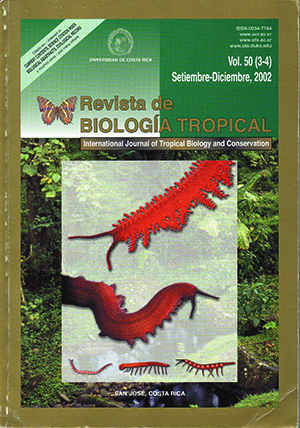Abstract
Previous studies indicated the presence of high concentrations of nickel in the “El truchón” ponds (in México), so it was necessary to find a possible correlation between sediment physicochemical properties of this water body and the damage that could be produced on the rainbow trout which culture is done in a rustic reservoir. The study was initiated with the determination of the physicochemical properties of the trout farm sediments, which are; granular composition, total nitrogen percentage, organic matter content, pH, redox potential, cationic interchange capacity, and Ni concentration. LC50 of Ni at 96 h was determined on Onchorynchus mykiss in the sytem water-sediment from the trout farm at equilibrium time. In the same system the sublethal toxicity of Ni was evaluated by the determination of metallotioneine (MT) levels, o-demethylase activity (OD) and protein concentration. The results showed a significant increment in the three-biochemical parameters. Alinear relation was observed between Ni concentration and MT, OD and protein concentration, so these damage biomarkers are recommended in order to evaluate Ni toxicity. Probably these effects were due to the physicochemical characteristics of the sediments, which may give a high capacity to store metal in it. According to the obtained results it was suggested not to use rustic ponds in the fish culture, and use concrete ponds to avoid the accumulation of toxic compounds or make periodic sediments remotion.Comments

This work is licensed under a Creative Commons Attribution 4.0 International License.
Copyright (c) 2002 Revista de Biología Tropical
Downloads
Download data is not yet available.


